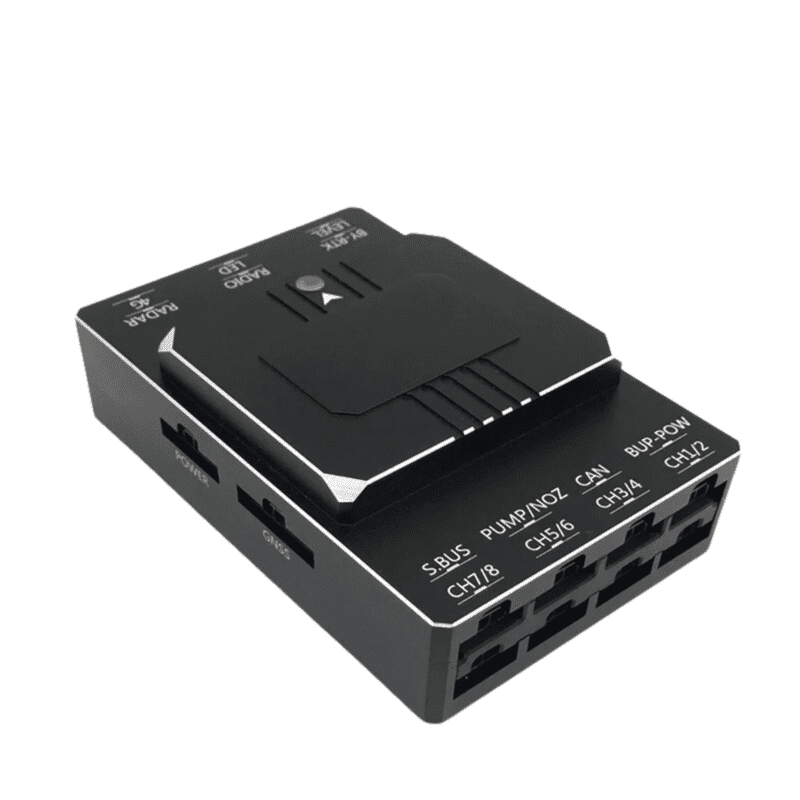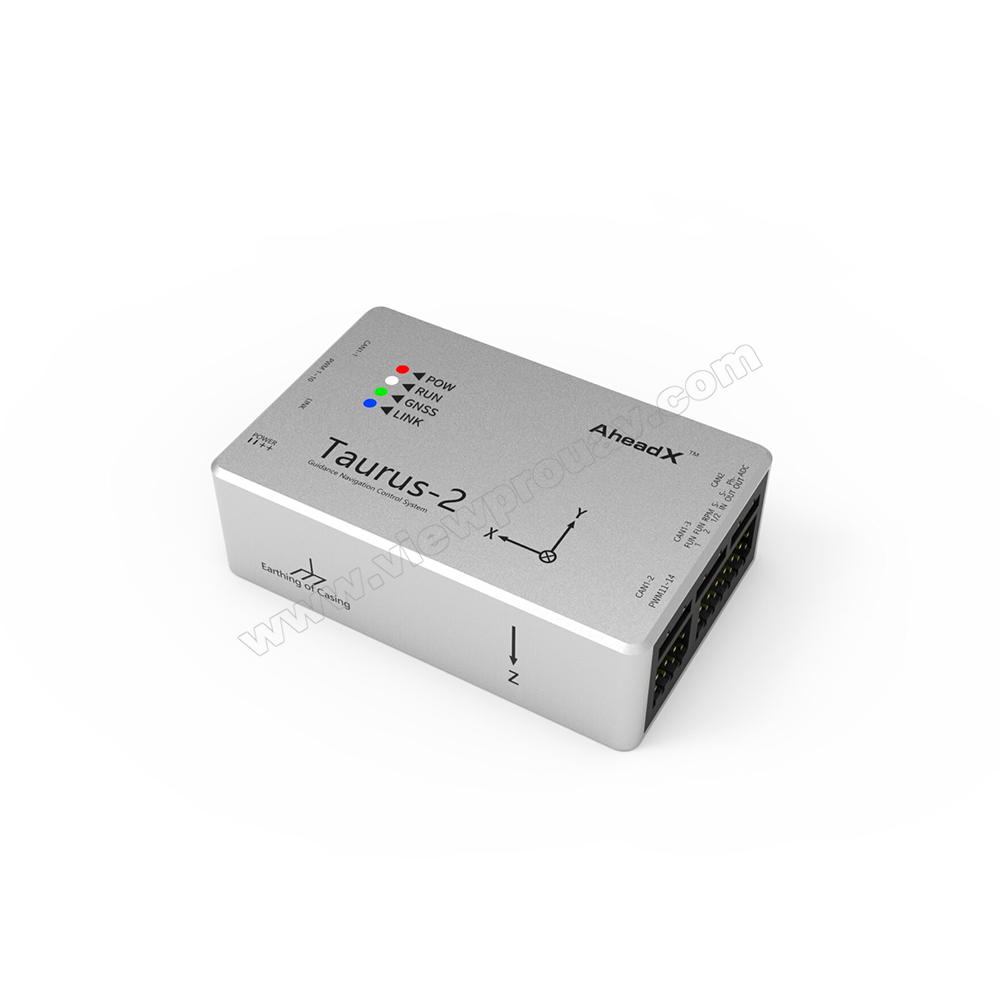Why Choose SparkNavi Drone Flight Controller and GNSS/INS Made in Taiwan for Advanced Navigation
Why Choose SparkNavi Drone Flight Controller and GNSS/INS Made in Taiwan for Advanced Navigation
Blog Article
Checking Out the Role of Drone Flight Controllers in Enhancing Flight Stability and Navigation Effectiveness
The development of drone modern technology has significantly boosted the significance of trip controllers, which act as the mind of these aerial automobiles. By integrating real-time information from a variety of sensing units, flight controllers boost trip stability and navigation performance, ensuring that drones can operate efficiently even in intricate environments. This discussion will certainly explore the key components that add to these renovations, as well as the ramifications for the future of autonomous trip. What innovations lie in advance that could even more transform the capacities of drone trip controllers?

Comprehending Trip Controllers
Flight controllers are integral elements in the performance of drones, functioning as the minds that support and manage trip operations. These innovative gadgets process data from numerous sensors, consisting of accelerometers, gyroscopes, and GPS, to ensure that the drone preserves its intended trip path. The flight controller interprets this information and performs commands based upon pre-defined formulas, enabling the drone to reply to ecological adjustments, such as wind or challenges.
The primary feature of a trip controller is to maintain stability during trip. It accomplishes this by making real-time changes to the drone's motors and control surface areas, making certain balance and control. Furthermore, modern flight controllers include sophisticated functions such as waypoint navigation, enabling automated trip courses and boosted functional performance.
Recognizing the style of trip controllers is vital for both professionals and hobbyists. As technology breakthroughs, trip controllers have actually ended up being much more qualified and portable, incorporating man-made intelligence to adjust and boost decision-making processes to complicated trip situations.
Secret Parts of Flight Stability
Accomplishing ideal flight security in drones relies upon several key elements that operate in concert to make sure regulated and smooth procedures. Central to this stability is the trip controller itself, which processes data from numerous sensing units to preserve the desired trip perspective. This consists of accelerometers and gyroscopes that determine movement and alignment, enabling real-time adjustments to the drone's position.
One more vital element is the digital speed controllers (ESCs), which regulate the power provided to the electric motors. By carefully tuning electric motor speeds in feedback to flight controller commands, ESCs aid preserve balance and neutralize disturbances triggered by wind or sudden activities.
In addition, the layout of the drone's framework plays a crucial function in trip stability. A well-structured framework minimizes vibrations and boosts the overall wind resistant account, adding to smoother trip qualities. Finally, the combination of advanced formulas within the flight controller help in anticipating adjustments, making certain a versatile and responsive flight experience.
With each other, these components develop a natural system that improves a drone's security, enabling accurate handling and boosted performance in various flight problems.
Navigation Effectiveness Techniques
Performance in navigation is vital for maximizing drone procedures, particularly in complex settings. Reliable navigation strategies improve the ability of drones to traverse tough surfaces and avoid challenges, therefore enhancing operational efficiency and security.
One prominent method is the application of advanced GPS and inertial measurement systems (IMUs) that offer exact place tracking and positioning data. These innovations allow drones to calculate optimal trip courses in real-time, considering numerous variables such as wind conditions and prospective obstacles.
One more method includes making use of you could try here algorithms for course preparation and optimization. Formulas such as A * and Dijkstra's formula can be released to figure out one of the most effective route while minimizing energy intake and flight time. Additionally, integrating machine learning versions can allow drones to adaptively gain from their environments, boosting navigating abilities through experience.

Influence On Autonomous Drones
The assimilation of innovative navigating techniques has greatly changed the capabilities of independent drones, allowing them to run with greater autonomy and precision. SparkNavi drone flight controller and GNSS/INS made in taiwan. These improvements are largely attributed to sophisticated trip controllers that utilize real-time data processing and sensing unit fusion, enabling drones to browse intricate settings seamlessly
The effect on self-governing drones prolongs beyond mere navigation; it incorporates improved challenge evasion, enhanced stability during dynamic problems, and raised goal dependability. By leveraging algorithms that include artificial intelligence and fabricated intelligence, drones can adjust to altering situations, making educated choices that optimize their trip paths while decreasing dangers.
Moreover, the implementation of durable flight controllers has actually promoted the execution of complex tasks, such as airborne examinations, shipment solutions, and farming surveillance, with marginal human treatment. This ability not only streamlines procedures yet likewise minimizes human mistake, thereby boosting total security.
Because of this, the functional scope of independent drones has actually increased dramatically, making them indispensable devices in different sectors. Their ability to perform efficiently in diverse situations highlights the essential duty that progressed trip controllers play in shaping the future of unmanned airborne systems.
Future Patterns in Flight Control
Regularly, innovations in flight control innovation are poised to redefine the landscape of drone procedures in the coming years. Emerging patterns indicate a considerable change towards boosted fabricated knowledge (AI) assimilation, making it possible for flight controllers to refine real-time information more effectively. This advancement will certainly facilitate improved decision-making abilities, enabling drones to adapt to dynamic environmental conditions autonomously.
Furthermore, the application of artificial intelligence algorithms is anticipated to enhance anticipating upkeep, therefore lessening downtime and extending the lifecycle of drone components. This positive technique to maintenance will be important as drone applications expand across different sectors, from agriculture to logistics.

.png)
Lastly, improvements in secure interaction methods will certainly attend to security and governing worries, ensuring that drones can operate effortlessly in overloaded airspaces (SparkNavi drone flight controller and GNSS/INS made in taiwan). Collectively, these patterns point in the direction of a future where flight control systems are not just smarter and more internet effective but likewise qualified of operating securely in an increasingly integrated airspace
Conclusion
Finally, drone flight controllers are integral to improving flight stability and navigating efficiency via the innovative processing of sensor information. By maintaining ideal trip attitudes and utilizing innovative algorithms for course optimization and barrier avoidance, these controllers dramatically add to the freedom and functional security of drones. As technology remains to progress, even more improvements in trip control systems are anticipated, promising enhanced performance and broadened capabilities in the realm of unmanned aerial lorries.
By integrating real-time information from a variety of sensors, flight controllers enhance trip stability and navigating performance, guaranteeing that drones can operate efficiently also in complex atmospheres.Trip controllers are important components in the functioning of drones, offering as the minds that manage and maintain trip procedures. Additionally, modern trip controllers integrate advanced features such as waypoint navigating, enabling for automated trip paths and boosted operational efficiency.
Central to this stability is the flight controller itself, which processes information from various sensing units to maintain the desired trip mindset.In verdict, drone flight controllers are integral to improving flight stability see this site and navigation performance via the innovative handling of sensing unit information.
Report this page